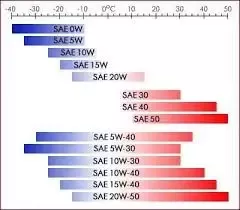Symptoms of a bad fuel tank selector valve include erratic engine idling and fuel leakage issues. These symptoms indicate potential problems with the valve that need prompt attention to prevent further damage.
A malfunctioning fuel tank selector valve can lead to fuel system inefficiencies, affecting the vehicle’s performance and fuel consumption. Proper diagnosis and timely repair or replacement of the valve are crucial to ensure the smooth operation of the fuel system and overall vehicle performance.
Ignoring these symptoms can result in more severe issues and higher repair costs in the long run. Addressing these signs promptly can help maintain the vehicle’s efficiency and prevent potential safety hazards on the road.

Credit: m.youtube.com
Introduction To Fuel Tank Selector Valves
Fuel tank selector valves play a crucial role in managing fuel flow in vehicles, enabling drivers to switch between different fuel tanks. Understanding the function of these valves and recognizing common symptoms of malfunction is essential for vehicle maintenance.
Function Of Fuel Selector Valves
Fuel selector valves control the flow of fuel from multiple tanks into the engine, allowing drivers to choose which tank supplies fuel. These valves ensure proper fuel distribution and optimize vehicle performance.
Common Vehicles With Selector Valves
Many trucks, RVs, and boats are equipped with fuel tank selector valves to enable the selection of specific tanks for fuel supply. These valves are prevalent in vehicles with dual-tank systems to provide flexibility and efficiency in fuel usage.
Recognizing The Symptoms
When it comes to diagnosing issues with the fuel tank selector valve, it’s crucial to be able to recognize the symptoms. Identifying these signs early on can help prevent further damage and costly repairs. Let’s take a closer look at the common indicators that your fuel tank selector valve may be malfunctioning.
Inconsistent Engine Performance
If you notice inconsistent engine performance, such as sputtering, stalling, or a lack of power during acceleration, it could be a sign of a faulty fuel tank selector valve. This component plays a critical role in ensuring that the engine receives a consistent and adequate fuel supply. When it fails, the engine may struggle to maintain a steady performance, leading to a range of issues that affect the overall driving experience.
Difficulty Starting The Engine
Difficulty starting the engine is another telltale sign of a potential problem with the fuel tank selector valve. A malfunctioning valve can disrupt the fuel flow to the engine, causing starting issues such as prolonged cranking or the engine failing to start altogether. If you find yourself experiencing repeated difficulties when trying to start the engine, it’s important to investigate the condition of the fuel tank selector valve.
Fuel Management Issues
Experiencing rough idling or engine stalling after fueling could indicate a faulty fuel tank selector valve. Watch out for inconsistent fuel supply symptoms.
Unexpected Fuel Tank Switching
One of the symptoms of a bad fuel tank selector valve is unexpected fuel tank switching. This issue can cause the vehicle to switch between fuel tanks without any input from the driver. This can lead to fuel delivery problems and affect the overall performance of the vehicle.
Uneven Fuel Levels In Dual Tanks
Another indication of a faulty fuel tank selector valve is uneven fuel levels in dual tanks. The imbalance in fuel distribution can result in one tank being depleted while the other remains full, causing uneven weight distribution and potentially affecting the vehicle’s handling.
When encountering these symptoms, it is crucial to address the issue promptly to ensure the proper functioning of the fuel management system.

Credit: www.etotheipiplusone.net
Electronic Failures And Indicators
When it comes to diagnosing issues with the fuel tank selector valve, electronic failures can manifest in various ways. Understanding the warning signs and error messages, as well as the electrical malfunctions affecting valve operation, is crucial for ensuring optimal performance of your vehicle’s fuel system.
Warning Lights And Error Messages
One of the primary indicators of a faulty fuel tank selector valve is the illumination of the Check Engine light on the dashboard. This warning light can signal a range of issues, including problems with the fuel system. Additionally, error messages related to fuel pressure or tank selection may appear on the vehicle’s display, providing valuable insight into the specific nature of the problem.
Electrical Malfunctions Affecting Valve Operation
Electrical malfunctions can significantly impact the operation of the fuel tank selector valve. These issues may result in the valve failing to switch between fuel tanks as intended, leading to fuel delivery inconsistencies. Intermittent or erratic valve operation can also be attributed to electrical faults, causing disruptions in the fuel supply to the engine and potentially affecting overall vehicle performance.
Physical Signs Of Valve Damage
Physical signs of valve damage can manifest as fuel leaks, engine misfires, or stalling issues. These symptoms indicate a potential problem with the fuel tank selector valve, requiring immediate attention to prevent further damage or safety hazards. Regular inspection and maintenance can help detect and address valve issues promptly.
Fuel Leaks And Odors
If you notice fuel leaks around the fuel tank selector valve or detect unusual odors of gasoline near the valve area, it could indicate a damaged valve. Fuel leaks pose a serious safety hazard and should be addressed immediately to prevent potential fire hazards and environmental contamination.
Visible Wear And Corrosion
Inspect the fuel tank selector valve for visible wear, corrosion, or rust. These signs of deterioration can indicate a damaged valve that may not be functioning properly. Corrosion can compromise the integrity of the valve, leading to fuel leaks and other safety concerns.
Secondary Effects On Vehicle Performance
When the fuel tank selector valve malfunctions, it can have several secondary effects on the overall performance of the vehicle. These effects can impact various components of the fuel system, leading to potential issues with fuel filters and fuel injectors.
Impact On Fuel Filters
The malfunctioning fuel tank selector valve can result in irregular fuel flow, causing a strain on the fuel filters. This increased strain can lead to clogging and reduced efficiency of the fuel filters, potentially restricting the flow of clean fuel to the engine. As a result, the engine may experience fuel starvation, leading to performance issues such as stalling, rough idling, and decreased power output.
Consequences For Fuel Injectors
Erratic fuel supply due to a faulty fuel tank selector valve can adversely affect the fuel injectors. Inconsistent fuel delivery can lead to uneven fuel distribution among the cylinders, resulting in misfires, rough engine operation, and decreased fuel efficiency. Additionally, prolonged exposure to inadequate fuel supply can cause the fuel injectors to become clogged or damaged, further compromising the engine’s performance.
Troubleshooting The Valve
Experiencing issues with your fuel tank selector valve? Look out for erratic idling after refueling, clogged filters, dark fuel color, or fuel leaks, indicating a potential problem. Troubleshooting these symptoms promptly can help prevent further complications with your vehicle’s fuel system.
Diagnostic Steps
If you suspect that your fuel tank selector valve is causing issues, it’s crucial to perform a thorough diagnostic process to pinpoint the problem. Here are the essential steps to troubleshoot the valve:
- Inspect for any visible signs of damage or corrosion on the valve housing.
- Check the electrical connections and wiring for any loose connections or frayed wires.
- Verify the functionality of the switch or control mechanism associated with the valve.
- Examine the fuel lines connected to the valve for any leaks or blockages.
- Test the valve’s operation by manually switching between fuel tanks, if applicable.
Testing The Valve’s Functionality
Once the initial diagnostic steps have been completed, it’s essential to conduct comprehensive testing to evaluate the functionality of the fuel tank selector valve. Follow these steps to test the valve’s operation:
- Use a multimeter to check for continuity in the electrical circuit of the valve.
- Apply power to the valve and observe its response, ensuring it switches between fuel tanks as intended.
- Monitor the fuel flow from each tank when the valve is activated to confirm proper fuel delivery.
- If applicable, engage the vehicle’s ignition and observe the behavior of the valve during startup.
Repair And Replacement Solutions
Detecting symptoms of a faulty fuel tank selector valve is crucial for timely repair and replacement solutions. Erratic idling after refueling could indicate a malfunction. Addressing these signs promptly can prevent further fuel system issues.
Repair and Replacement Solutions When to Repair vs. Replace When facing a faulty fuel tank selector valve, consider the following: – DIY Tips and Professional Services If you’re a handy individual, you may opt to tackle the repair yourself. However, for those less inclined, seeking professional services is advisable. DIY Tips – Use manufacturer guidelines for reference. – Ensure proper safety measures are in place. – Double-check all connections post-repair. Professional Services – Expert technicians offer precise diagnosis. – Professional equipment ensures accurate repairs. – Guaranteed service quality and reliability. Remember, choosing between repair and replacement depends on the severity of the issue and your expertise level.Preventive Measures And Maintenance
A bad fuel tank selector valve is a common issue that can cause serious problems for your vehicle. Symptoms of a bad fuel tank selector valve include engine stalling, difficulty starting the engine, and poor fuel efficiency. It is important to be aware of these symptoms and take preventive measures and maintenance to avoid the issue from worsening.
Regular Inspection Routines
The best way to prevent a bad fuel tank selector valve is to regularly inspect your vehicle’s fuel system. This includes checking the fuel tank and fuel lines for any signs of damage or wear. You should also inspect the fuel tank selector valve itself for any signs of corrosion or damage that may affect its performance. Regular inspections can help you catch any issues early on and avoid more serious problems down the road.
Keeping the Valve Clean and Unobstructed
Another important maintenance task is to keep the fuel tank selector valve clean and unobstructed. Over time, debris and dirt can build up in the valve, causing it to malfunction. You can prevent this by regularly cleaning the valve and ensuring that it is free from any obstructions. This can help ensure that the valve operates smoothly and efficiently, and can help prevent any potential problems from occurring.
Overall, taking preventive measures and maintenance can help you avoid a bad fuel tank selector valve and ensure that your vehicle runs smoothly and efficiently. Regular inspections and cleaning can help you catch any issues early on and avoid more serious problems down the road. If you do suspect that your fuel tank selector valve is bad, it is important to have it checked and replaced as soon as possible to avoid any further damage or issues.
Credit: www.ford-trucks.com
Frequently Asked Questions
What Does The Fuel Selector Valve Do?
The fuel selector valve allows the pilot to choose which fuel tank is feeding the engine in aircraft. It is used to alternate between left and right tanks or to select both tanks in some systems. It helps to prevent fuel spills or leaks and maintains a certain level of vacuum in the tank.
What Are The Symptoms Of A Fuel Tank Breather Valve?
Symptoms of a fuel tank breather valve include erratic idle after filling the gas tank. Replace the valve if needed.
What Does A Fuel Tank Vent Valve Do?
The fuel tank vent valve releases pressure, preventing explosions and maintaining vacuum to prevent fuel spills and leaks.
What Are The Symptoms Of A Dirty Fuel Tank?
Symptoms of a dirty fuel tank include clogged filters, dark or hazy fuel, debris, sludge, increased exhaust, injector corrosion, and a bad odor.
Conclusion
To sum up, recognizing the symptoms of a faulty fuel tank selector valve is crucial. Addressing issues promptly can prevent further damage and ensure smooth vehicle operation. Stay vigilant for signs like engine misfiring or stalling to avoid potential safety hazards on the road.


